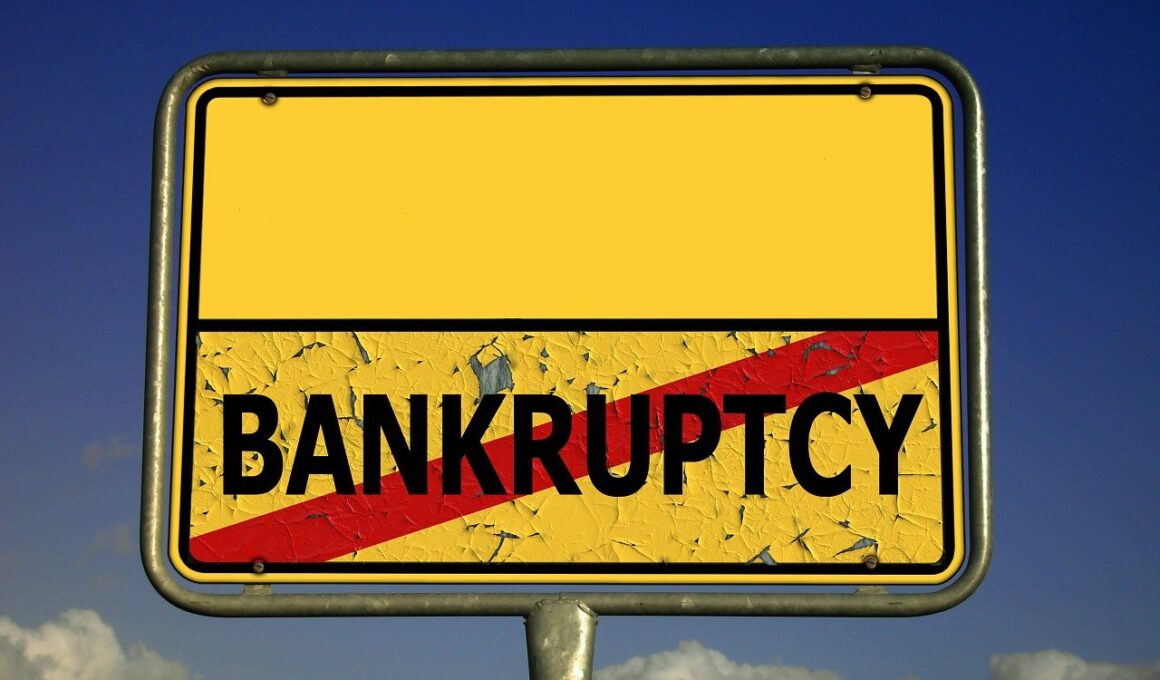Why Bankruptcy Isn’t a Quick Fix: Myths About Duration
Bankruptcy is often misconstrued as a quick solution to overwhelming financial problems. Many individuals believe that filing for bankruptcy is a straightforward process, which will automatically relieve them of all debts within a matter of weeks. In reality, bankruptcy can be a lengthy process, often taking several months or even years to fully resolve. Those who expect immediate relief may find the outcome disappointing, as the process involves various legal proceedings, court hearings, and possible negotiations with creditors. Furthermore, even when a bankruptcy case is completed, it doesn’t erase all debts. Many debts, like student loans or certain tax liabilities, remain payable after bankruptcy. Therefore, it’s crucial for individuals contemplating this legal route to fully understand what bankruptcy entails, including its duration, implications, and requirements. Speaking with a knowledgeable attorney can offer clarity and guidance. This preparation can help set realistic expectations for the timeline and results of bankruptcy, turning the myth of an instant fix into a more accurate understanding of the necessary time frame involved.
Another common myth surrounding bankruptcy is the assumption that it will automatically improve one’s credit score. While it is true that bankruptcy can provide relief from debilitating debt, it also has a significant and lasting impact on a person’s credit history. Most individuals are unaware that bankruptcy can remain on their credit report for up to ten years, depending on the type of bankruptcy filed. This negative mark can hinder one’s ability to secure a mortgage, credit card, or other types of loans during that period. Many people mistakenly believe that once their debts are cleared, they can easily rebuild their credit. The truth is, rebuilding credit after bankruptcy takes time, patience, and a commitment to responsible financial behavior. Individuals may need to work hard to demonstrate their creditworthiness through consistent, timely payments on any remaining debts or new credit lines. Additionally, they should consider seeking credit counseling to help navigate the complexities of rebuilding their financial reputation. This way, they can better prepare for the future and move past the myth that bankruptcy is a clean slate for credit scores.
Filing for Bankruptcy Doesn’t End Your Financial Issues
Many mistakenly believe that filing for bankruptcy is a magic wand that will make all financial troubles disappear instantly. Contrary to this belief, filing for bankruptcy often initiates a complex process filled with legal requirements and obligations. One of the biggest misconceptions is that bankruptcy will immediately halt all collection activities and erase debts. While an automatic stay does occur after filing, which temporarily stops creditors from collecting, it doesn’t grant immunity against every financial obligation. Certain types of debts, such as child support or alimony, cannot be discharged in bankruptcy. Additionally, bankruptcy does not offer relief from secured debts unless the debtor is willing to relinquish the collateral backing those debts. Many individuals presume that this one action will solve all their problems, only to realize they are left dealing with the logistics, financial limitations, and stress this process can cause. Therefore, it’s crucial to understand the intricacies involved in bankruptcy filing, so expectations can align with reality. Consulting with financial experts and understanding all aspects of the process is vital for anyone considering taking this path.
Another myth is that bankruptcy can resolve issues with all types of debts. Generally, individuals believe that once they file, they’ll be free from any liability. However, the truth is that certain debts may remain unaffected by the bankruptcy discharge. For example, debts like student loans, tax debts, and domestic support obligations are typically not dischargeable. Even though bankruptcy may eliminate a significant portion of unsecured debt, many people will remain financially responsible for other obligations. This could lead to financial confusion and hinder effective decision-making in the newly discharged landscape. It is essential to review the different types of bankruptcy available, such as Chapter 7 and Chapter 13, along with their specific provisions regarding debt discharge. This understanding will clarify which of your debts may be wiped clean and what remains after filing. Additionally, seeking professional advice can offer more tailored solutions based on individual circumstances, helping to debunk the myth that bankruptcy acts as a blanket remedy for all kinds of financial obligations.
Bankruptcy Is Only for Those Who Are Financially Irresponsible
A persistent myth surrounding bankruptcy is the belief that only those who are irresponsible or bad with money end up needing to file. In reality, the reasons behind bankruptcy often involve circumstances beyond an individual’s control, such as job loss, medical emergencies, or divorce. Many people find themselves in dire financial straits due to unexpected life events that disrupt their income and cause overwhelming medical expenses. Moreover, even financially-savvy individuals can encounter challenges that lead to bankruptcy filings. It is crucial to recognize that this decision often stems from a need for relief rather than negligence. Characterizing all who file for bankruptcy as irresponsible ignores the complexities of the financial landscape. Society should encourage empathy and understanding towards those in distress, rather than stigmatizing them. Feeling ashamed or alone can prevent individuals from seeking the help they need. Addressing these misconceptions can lead to a better understanding of the various struggles people face on their financial journeys and reinforce that bankruptcy is not simply a moral failing.
Bankruptcy isn’t a straightforward initiator of positive change. Many are led to believe that filing will instantly lead to financial independence and a fresh beginning. Unfortunately, this perception is misleading, as debt relief comes at the cost of time, effort, and potential long-term impact on one’s financial life. The transition period post-bankruptcy can be filled with restrictions and limitations, such as diminished credit options and barriers to new financing. In this transitional phase, individuals may find it challenging to secure new loans or credit cards, leading to further frustration. Additionally, the emotional toll and stress involved in the bankruptcy process can have far-reaching effects on a person’s overall well-being. Understanding that change will not happen instantly is vital for those exploring this avenue. Engaging in strategic financial planning and learning about responsible credit usage post-bankruptcy will significantly help in moving towards a more stable financial future. Transforming these expectations can help prevent disappointment and foster resilience in those wanting to start anew.
(Conclusion) Debunking Bankruptcy Myths for Better Choices
It is clear from these insights that many individuals harbor misconceptions surrounding bankruptcy and its effectiveness as a quick fix. This leads to misinformed decisions, creating stress and further complications. Understanding the detailed nature of the bankruptcy process alongside its implications allows individuals to approach the situation with realistic expectations. Acknowledging that bankruptcy may not discharge all debts, nor automatically improve credit scores, helps paint a clearer picture of the reality at hand. Each case is unique, as is the journey toward financial recovery post-bankruptcy. Seeking advice from knowledgeable financial experts can help debunk myths and provide clarity regarding expectations. Individuals need to be fully informed before making significant financial decisions. This knowledge is essential to navigating the path forward following bankruptcy sensitively and responsibly. Engaging with these truths not only benefits the individuals involved but also contributes to a more informed society. Breaking the stigma surrounding bankruptcy will empower others to seek the help they need without fear of judgment.


